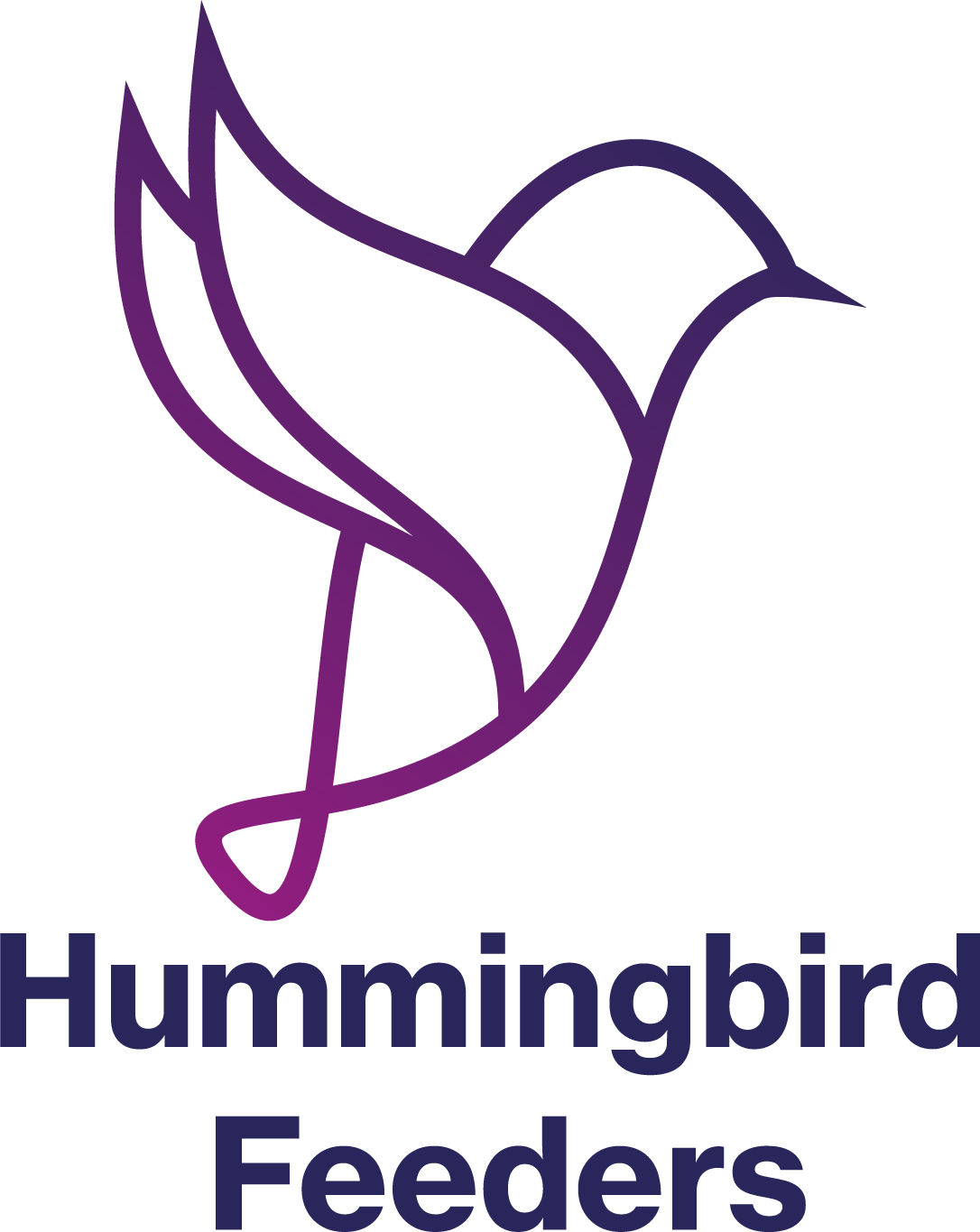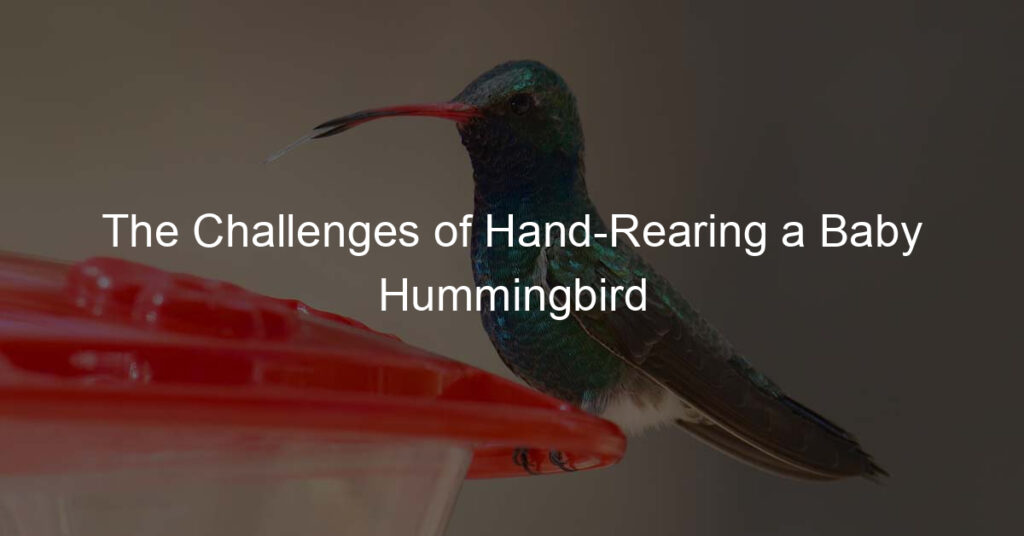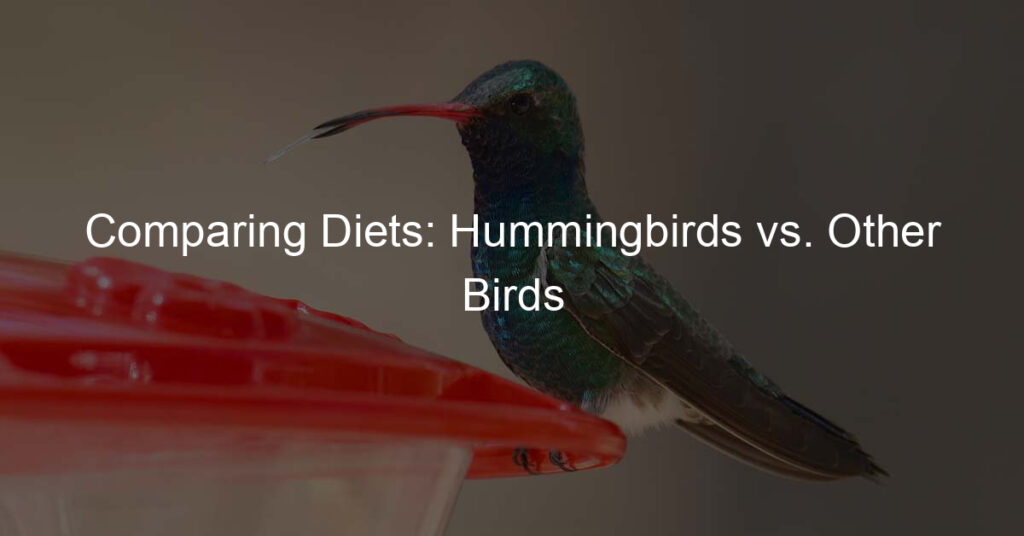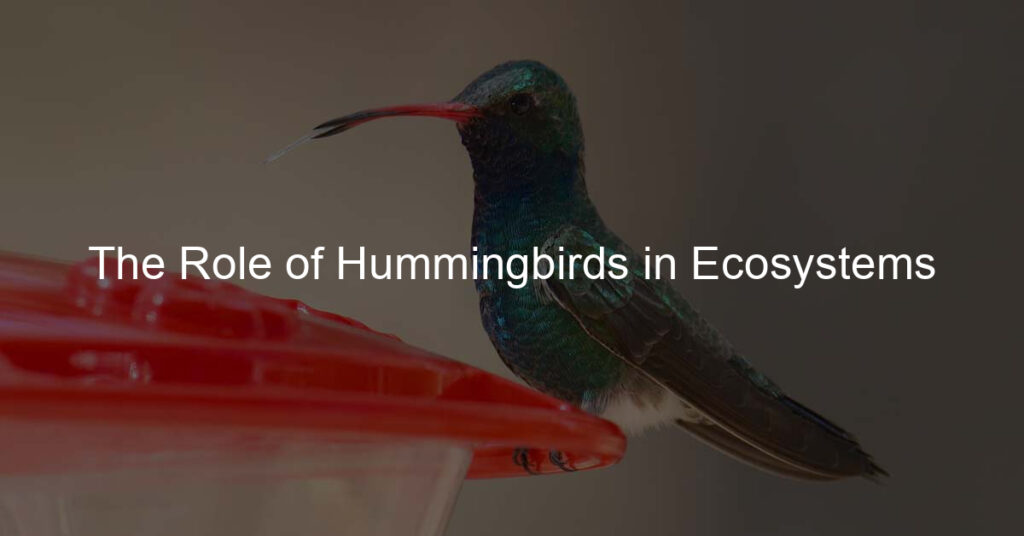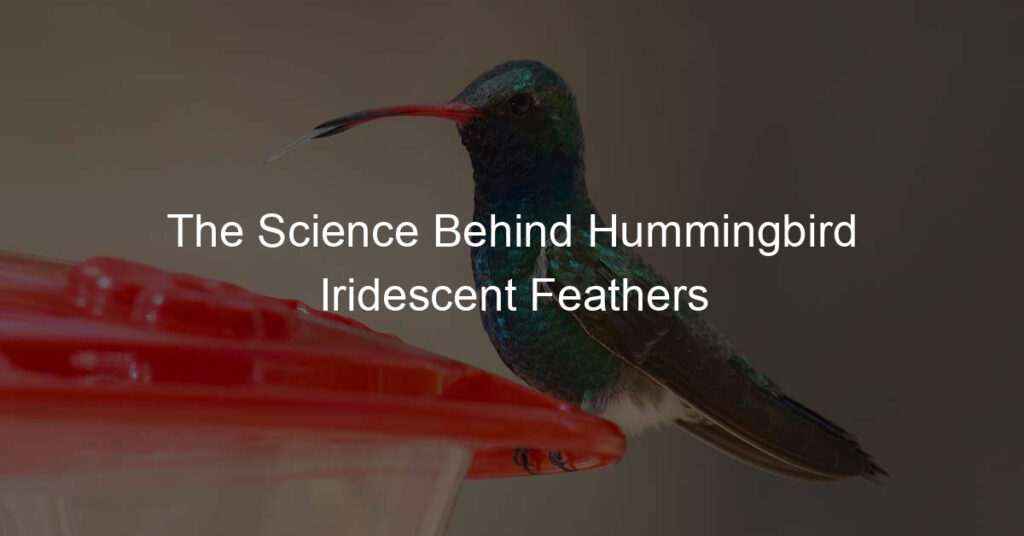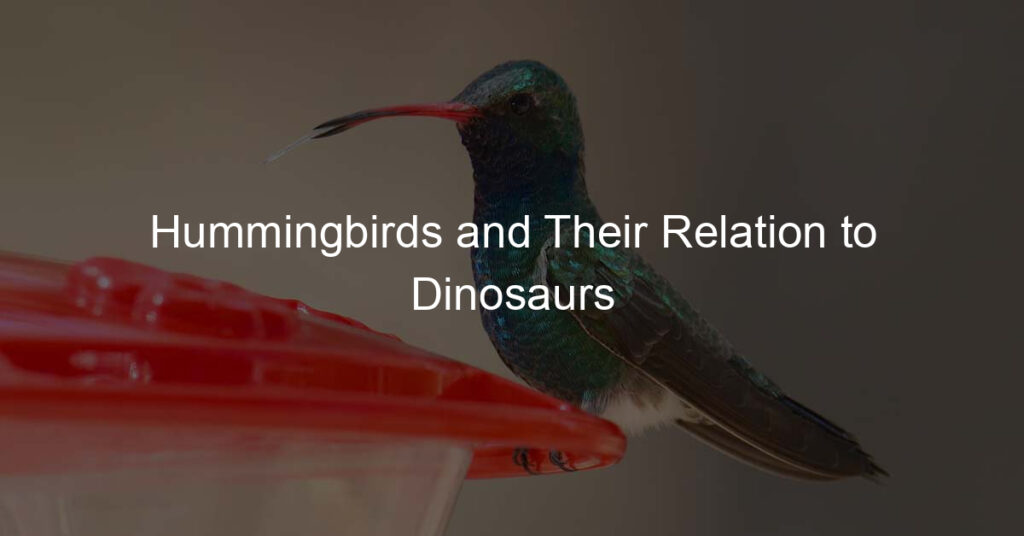Introduction: The Joy and Challenges in Bird Rearing
Raising a baby hummingbird can be an exciting and rewarding experience. However, it’s not without its challenges. In this blog post, we will explore both the joy and the difficulties involved in hand-rearing these tiny, vibrant creatures.
The joy of raising a baby hummingbird
There is a unique sense of joy that comes with raising a baby hummingbird. Watching them grow from a tiny, helpless creature into a vibrant, flitting bird is a truly rewarding experience. The sight of their iridescent feathers catching the light, the sound of their rapid wingbeats, and their fascinating feeding habits can bring immense pleasure to bird lovers.
The challenges faced in hand-rearing baby hummingbirds
Despite the joy, hand-rearing baby hummingbirds is not without its challenges. These birds require specific care and attention. They need to be fed every 15 to 20 minutes from dawn till dusk, which can be a demanding task. Additionally, their diet needs to be carefully balanced to ensure they receive all the necessary nutrients. Baby hummingbirds are also extremely delicate, and handling them requires a gentle touch. Lastly, they are susceptible to a range of health issues, which can be difficult to identify and treat due to their small size.
Despite these challenges, the joy and satisfaction of successfully raising a baby hummingbird make the effort worthwhile. In the following sections, we will delve deeper into understanding baby hummingbirds, their feeding habits, rehabilitation, and care tips to help you on your bird-rearing journey.
Understanding Baby Hummingbirds
Hummingbirds, known for their vibrant colors and rapid wing movements, are a marvel of nature. But what about their babies? Baby hummingbirds, also known as hatchlings, are delicate creatures that require specific care and attention. Let’s delve into the fascinating world of baby hummingbirds and understand their needs and common problems they face.
Hummingbird Hatchling Care
Caring for a hummingbird hatchling is a delicate task that requires knowledge and patience. Here are some key aspects to consider:
Understanding the needs of a hummingbird hatchling: Baby hummingbirds are tiny and fragile. They require a diet rich in protein and sugar, which they usually get from nectar and small insects. They also need a warm and safe environment, as they cannot regulate their body temperature in the early stages of life. It’s important to note that human interaction should be minimal to avoid stress and potential harm to the hatchling.
Common hummingbird nestling problems: Baby hummingbirds can face several problems. They are vulnerable to predators, harsh weather conditions, and diseases. One common issue is “falling out of the nest,” which can lead to injuries or exposure to predators. Another problem is malnutrition if the mother hummingbird is unable to provide enough food. In such cases, human intervention may be necessary to ensure the survival of the hatchling.
Understanding the needs and potential problems of hummingbird hatchlings is crucial for their survival and growth. With the right knowledge and care, these tiny creatures can grow into the vibrant, fast-flapping hummingbirds we all admire.
Hummingbird Nestling Problems
When it comes to raising baby hummingbirds, it’s important to be aware of the common health issues they may face. Recognizing these problems early can make a significant difference in their survival and growth.
Recognizing common health issues
There are several health issues that are commonly seen in hummingbird nestlings. These include:
Dehydration: This can occur if the bird is not receiving enough fluids. Signs of dehydration include lethargy, dry mouth, and sunken eyes.
Malnutrition: If the bird is not getting the right nutrients, it can lead to malnutrition. This can be seen in slow growth, dull feathers, and lack of energy.
Infections: Birds can also suffer from various infections, often resulting from injuries or poor living conditions. Symptoms may include swelling, redness, and pus.
It’s important to note that these are just a few examples. If your hummingbird nestling is showing signs of distress or illness, it’s crucial to seek professional help.
How to handle these problems
Handling these common health issues involves a combination of prevention, early detection, and appropriate treatment. Here are some steps you can take:
Prevention: Maintain a clean and safe environment for the birds. This can help prevent infections and other health issues.
Early detection: Regularly monitor the birds for any signs of illness. Early detection can greatly improve the chances of recovery.
Treatment: If a bird is showing signs of illness, it’s important to seek professional help. A wildlife rehabilitator or vet can provide appropriate treatment and advice.
Remember, it’s always better to prevent a problem than to treat it. By keeping a close eye on your hummingbird nestlings and providing them with the care they need, you can help them grow into healthy, thriving adults.
For more information on hummingbird care, visit the Hummingbird page on Wikipedia.
Feeding Baby Hummingbirds
Feeding baby hummingbirds is a delicate task that requires a good understanding of their dietary needs and careful preparation of their food. Let’s delve into the specifics of hand-rearing these tiny creatures.
Hand-Rearing Hummingbirds: Feeding Techniques
Hand-rearing hummingbirds involves two main steps: understanding their diet and preparing their feed. Let’s explore each of these steps in detail.
Understanding the diet of a baby hummingbird
Baby hummingbirds, also known as nestlings, primarily feed on a diet of insects and nectar. This provides them with the necessary proteins and sugars they need for growth and development. In the wild, their parents feed them by regurgitating a mixture of nectar and insects directly into their mouths. When hand-rearing, it’s essential to replicate this diet as closely as possible. Wikipedia provides more detailed information on the diet of hummingbirds.
How to prepare and administer feed
Preparing feed for baby hummingbirds involves creating a mixture that closely resembles their natural diet. This typically includes a high-quality hummingbird nectar supplement and finely chopped insects. The feed should be administered using a small syringe, carefully placing the food into the bird’s mouth. It’s important to feed the baby hummingbirds every 15-20 minutes from dawn until dusk, replicating their feeding schedule in the wild.
Remember, feeding baby hummingbirds is a big responsibility. It requires patience, dedication, and a deep understanding of their dietary needs. But with the right approach, you can help these tiny creatures grow into healthy, vibrant adults.
Feeding Challenges and Solutions
Feeding baby hummingbirds can sometimes be a bit tricky. But don’t worry, we’re here to help. Let’s take a look at some common feeding problems and practical solutions to these problems.
Common feeding problems
There are several challenges that you might encounter when feeding baby hummingbirds. Here are a few:
Incorrect diet: Baby hummingbirds need a specific diet to grow healthy and strong. Feeding them the wrong food can lead to health problems.
Feeding frequency: Baby hummingbirds need to be fed every 15-20 minutes from dawn till dusk. Missing feedings can result in malnutrition.
Improper feeding technique: Incorrect feeding methods can lead to choking or aspiration pneumonia.
Practical solutions to these problems
Here are some practical solutions to overcome these feeding challenges:
Correct diet: Baby hummingbirds should be fed a diet of nectar, insects, and fruit. You can find hummingbird food at your local pet store or online.
Feeding schedule: Set a reminder to feed the baby hummingbirds every 15-20 minutes during the day. This will ensure they get the nutrition they need.
Proper feeding technique: Use a small syringe or eyedropper to feed the baby hummingbirds. Be gentle and make sure not to force the food.
Remember, feeding baby hummingbirds can be a challenge, but with patience and the right techniques, it can also be a rewarding experience. Keep these tips in mind, and you’ll be well on your way to raising healthy and happy hummingbirds.

Hummingbird Rehabilitation
Hummingbird rehabilitation is a delicate process that requires knowledge, patience, and a deep understanding of these tiny creatures. In this section, we will focus on how to rescue a baby hummingbird and the steps involved in the process.
Rescue Baby Hummingbird: When and How
Rescuing a baby hummingbird can be a rewarding experience. However, it’s important to know when a baby hummingbird needs help and the correct steps to take to ensure its survival.
Recognizing when a baby hummingbird needs rescue
It’s crucial to understand that not all baby hummingbirds found alone need rescuing. Often, the mother is nearby gathering food. However, if the bird is injured, appears weak or cold, or is in a dangerous location, it may need help. Look for signs such as a drooping wing, difficulty flying, or visible wounds. Wikipedia provides more information on hummingbird behavior that can help you make an informed decision.
Steps to take in rescuing a baby hummingbird
If you determine that a baby hummingbird needs rescue, follow these steps:
Prepare a small box with soft lining for the bird.
Wear gloves to protect both you and the bird.
Gently pick up the bird and place it in the box.
Keep the bird in a quiet, warm place.
Contact a local wildlife rehabilitator or bird rescue center.
Remember, it’s important not to try to feed the bird or give it water. Leave that to the professionals who understand the bird’s dietary needs.
Rescuing and rehabilitating a baby hummingbird can be a complex process, but with the right knowledge and approach, you can make a significant difference in the life of these beautiful creatures.
Rehabilitation Process and Techniques
When it comes to hummingbird rehabilitation, it’s crucial to understand the process and the techniques involved. This knowledge can help ensure the bird’s successful recovery and return to the wild.
Understanding the Rehabilitation Process
The rehabilitation process for hummingbirds is a delicate and meticulous one. It begins with a thorough health assessment to identify any injuries or illnesses. The bird is then placed in a safe and comfortable environment where it can recover. This environment is carefully controlled to mimic the bird’s natural habitat as closely as possible.
Feeding is a critical part of the rehabilitation process. Hummingbirds require a specific diet, rich in nectar and small insects. The bird’s weight and health are closely monitored to ensure it is gaining strength and recovering well.
The final stage of the rehabilitation process is the release. This is done when the hummingbird is fully recovered and able to fly and feed independently. The release is typically done in a suitable habitat, during a time of year when food sources are abundant.
Techniques Used in Hummingbird Rehabilitation
The techniques used in hummingbird rehabilitation are specialized and require a deep understanding of the bird’s needs and behaviors. Here are some of the key techniques:
Feeding: Hummingbirds are fed a specialized diet using a syringe or a small, soft-tipped feeding tube. This ensures they receive the right nutrients without causing harm.
Physical Therapy: If the hummingbird has suffered an injury, physical therapy may be necessary. This can involve gentle exercises to help the bird regain strength and mobility.
Environmental Enrichment: Providing a stimulating environment is crucial for the bird’s mental well-being. This can include a variety of perches, flowers, and even a small water feature for bathing.
Monitoring: Regular health checks and weight monitoring are essential to track the bird’s progress and adjust the care plan as necessary.
Hummingbird rehabilitation is a complex and rewarding process. With the right knowledge and techniques, we can help these beautiful creatures recover and thrive in their natural habitats.
Baby Bird Care Tips
When it comes to caring for baby birds, there are several important factors to consider. Here, we’ll discuss some general tips that can help ensure your feathered friends grow up healthy and strong.
General Care Tips for Baby Birds
Whether you’re caring for a baby hummingbird or another species, these tips can be applied universally.
Creating a safe and comfortable environment:
Just like human babies, baby birds need a safe and comfortable environment to thrive. This includes a warm, quiet space free from predators and harsh weather. Make sure the bird’s nest or cage is clean and contains soft materials for comfort. You can use a heat lamp to maintain an appropriate temperature, but be careful not to overheat the bird. Also, ensure that the bird has plenty of room to move around as it grows.
Monitoring health and growth:
Regularly monitor the baby bird’s health and growth. Look for signs of illness such as lethargy, loss of appetite, or changes in droppings. Weigh the bird daily to ensure it’s gaining weight appropriately. If you notice any concerning signs, consult a veterinarian immediately. Remember, early detection and treatment of health issues can significantly improve the bird’s chances of survival.
By following these tips, you can provide the best possible care for your baby bird. Remember, every bird is unique and may require different care. Always consult with a professional if you’re unsure about something.
Case Study: Successful Hand-Rearing of a Baby Hummingbird
Introduction to the case study
In this case study, we will explore the journey of a dedicated bird enthusiast who successfully hand-reared a baby hummingbird. The baby bird, named ‘Tiny’, was found abandoned and fragile, barely a few days old. With no mother hummingbird in sight, the enthusiast took it upon themselves to care for Tiny, ensuring its survival and growth.
Key takeaways from the case study
Here are some of the key insights from this successful hand-rearing case study:
Patience and Consistency: Hand-rearing a baby hummingbird is a time-consuming process that requires patience and consistent care. Tiny was fed every 15-20 minutes from dawn till dusk, mimicking the feeding pattern of mother hummingbirds in the wild.
Proper Nutrition: The right diet is crucial for the growth and development of a baby hummingbird. Tiny was fed a diet of high-protein insect formula and nectar, closely resembling the natural diet of hummingbirds.
Health Monitoring: Regular health checks were conducted to ensure Tiny was growing properly and not developing any health issues. This included monitoring weight gain and feather growth.
Gradual Independence: As Tiny grew, the care-giver gradually reduced feeding frequency, encouraging the bird to start foraging on its own. This was an important step in preparing Tiny for eventual release into the wild.
In conclusion, this case study demonstrates that with the right knowledge, dedication, and resources, it is possible to successfully hand-rear a baby hummingbird. However, it is important to remember that such an endeavor should only be undertaken when absolutely necessary, and it is always best to leave wildlife in the wild whenever possible.
Conclusion: The Reward of Raising a Baby Hummingbird
As we reach the end of our journey through the world of baby hummingbirds, it’s time to reflect on the rewards that come with this unique experience. Successfully raising a baby hummingbird is not just about providing food and shelter, but also about nurturing a life and witnessing its growth. The satisfaction derived from this process is immeasurable and deeply fulfilling.
The satisfaction of successfully raising a baby hummingbird
Raising a baby hummingbird from a helpless chick to a vibrant, flying creature is a rewarding experience. It’s a journey filled with challenges and learning opportunities. The joy of seeing a hummingbird you’ve cared for take its first flight is unparalleled. It’s a testament to your dedication, patience, and love. It’s a moment that makes all the hard work worth it. This satisfaction is not just about personal achievement, but also about contributing to the survival and prosperity of these beautiful creatures.
Encouragement for future bird caregivers
If you’ve ever considered becoming a bird caregiver, let this be your encouragement. The journey may be challenging, but the rewards are immense. You’ll learn a lot, not just about hummingbirds, but also about the broader ecosystem they inhabit. You’ll develop a deeper appreciation for nature and its intricate balance. And most importantly, you’ll experience the joy of making a tangible difference in the life of a creature that depends on you.
Remember, every bird caregiver started somewhere. With the right information, resources, and a little bit of courage, you too can embark on this rewarding journey. As Wikipedia states, “Hummingbirds are birds native to the Americas and are among the smallest of birds.” They need our help to thrive, and every little effort counts.
In conclusion, raising a baby hummingbird is a rewarding journey that offers immense satisfaction and serves as a source of encouragement for future bird caregivers. It’s a journey that brings you closer to nature and teaches you the value of patience, dedication, and love.
